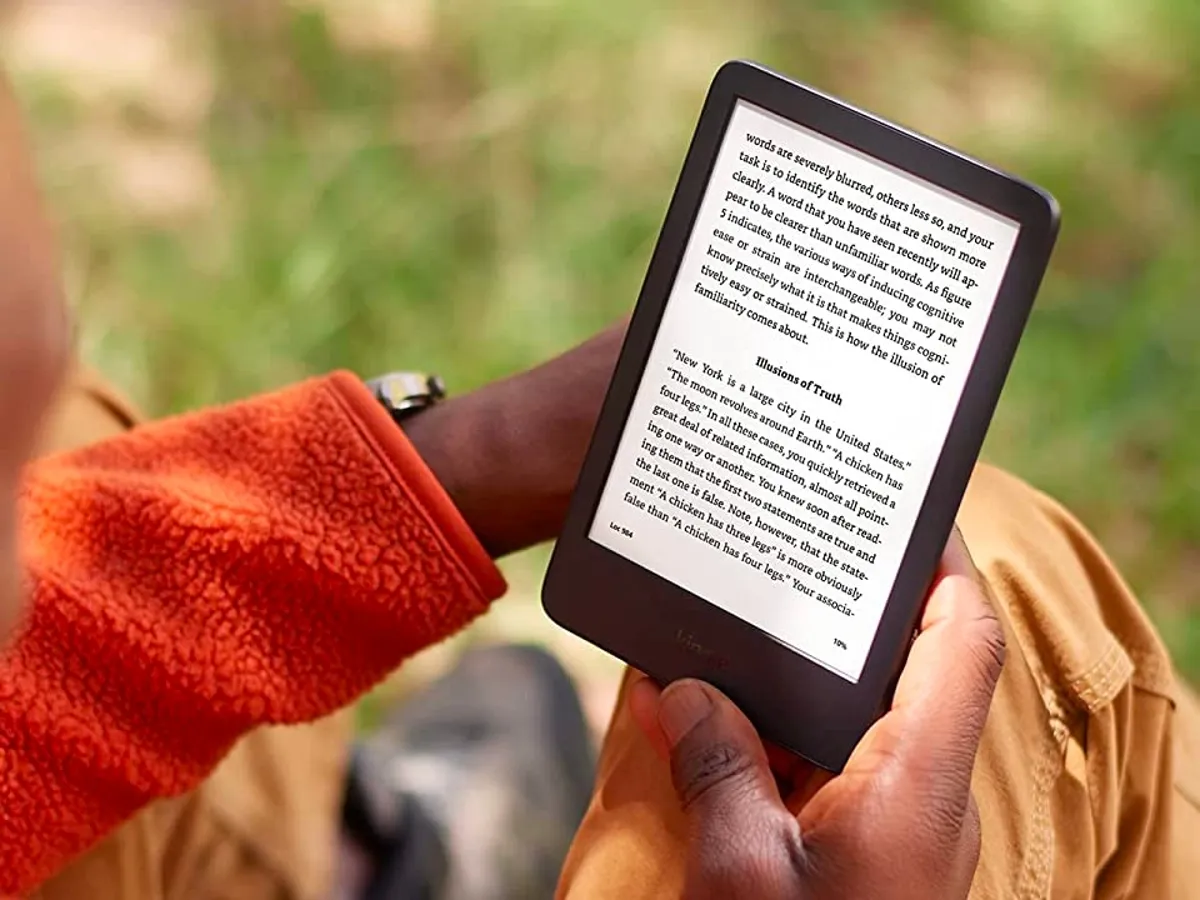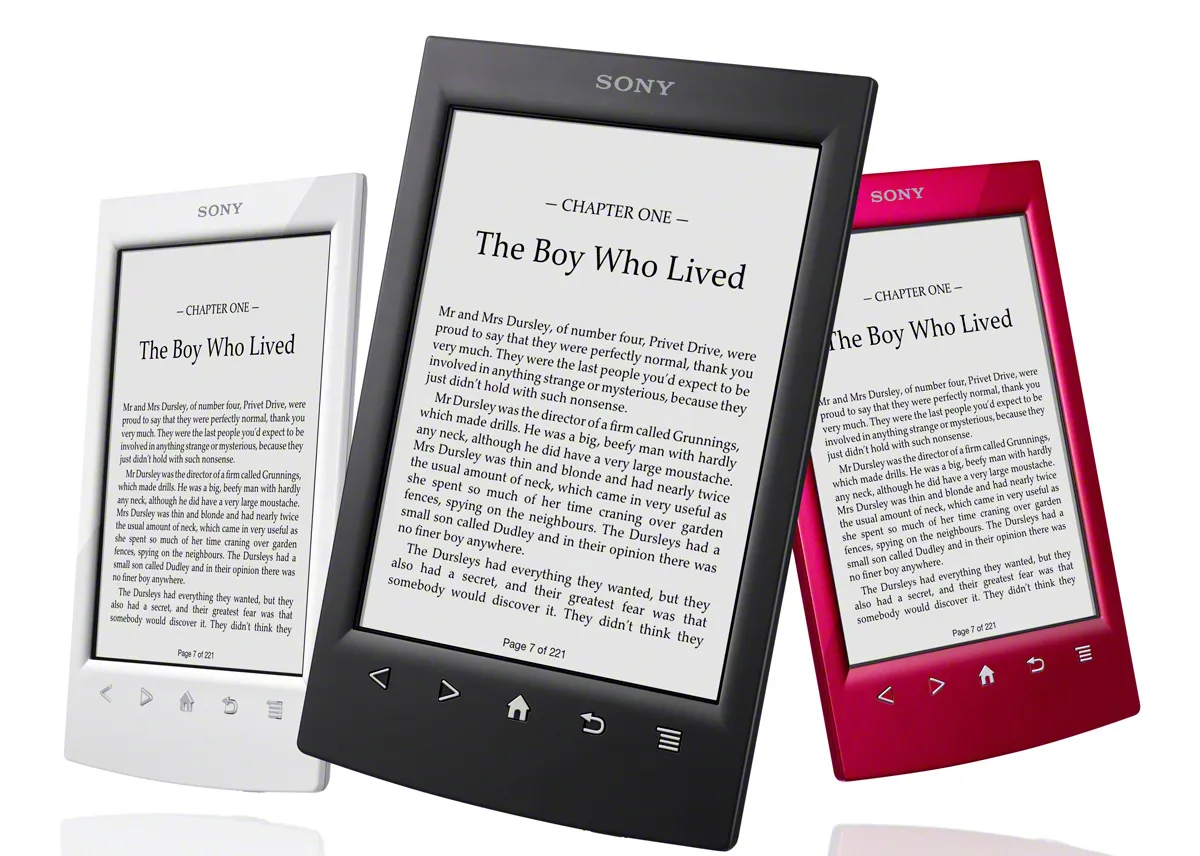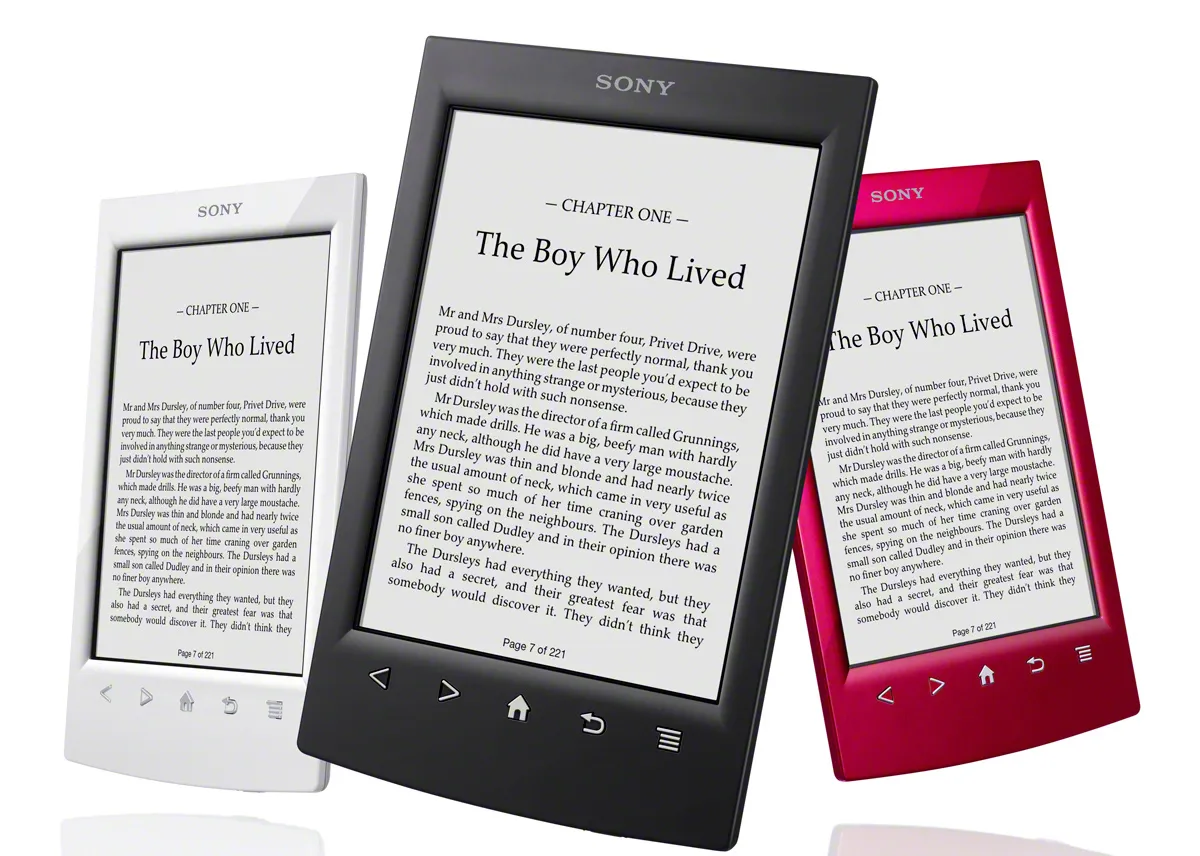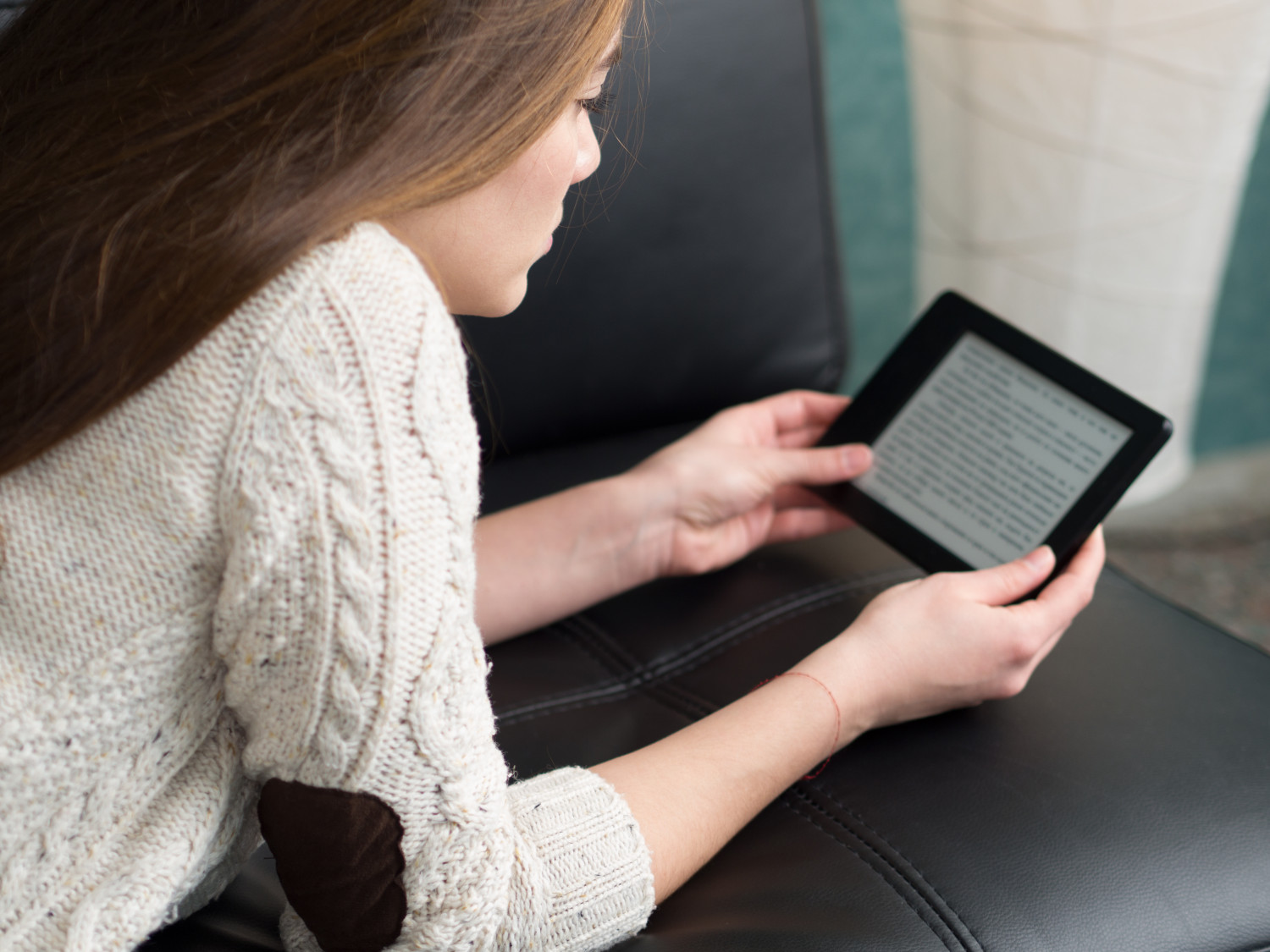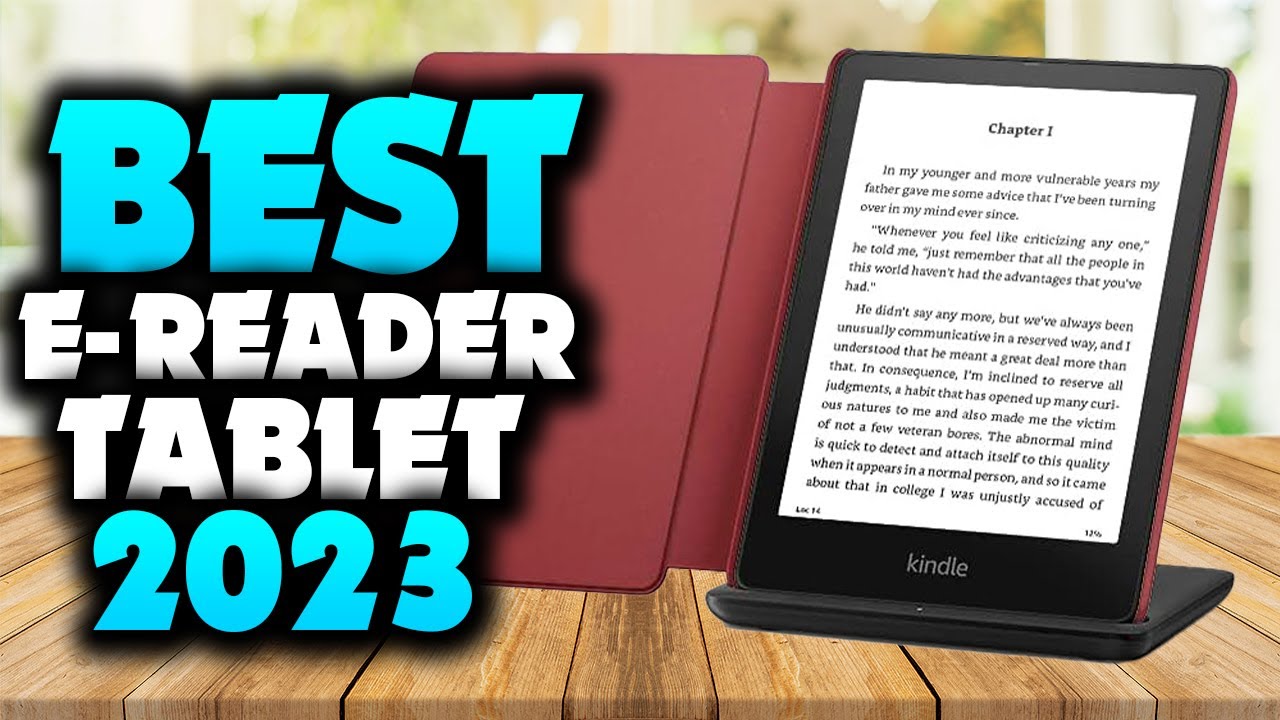Introduction
Welcome to the world of eReaders, where thousands of books can be stored in a single portable device. With the advancement of technology, traditional paper books are no longer the only option for avid readers. An eReader, short for electronic reader, is a digital device designed specifically for reading books, magazines, and other written content.
The rise of eReaders has revolutionized the way we consume literature. These devices offer a multitude of benefits, including convenience, portability, and accessibility. Whether you’re an avid reader or a casual bookworm, an eReader can greatly enhance your reading experience.
By using an eReader, you no longer have to carry around a stack of books in your bag or worry about running out of reading material while on the go. With a single device, you can have an entire library at your fingertips. The compact size of eReaders makes them easy to carry, making it convenient to read wherever and whenever you want.
Another advantage of eReaders is the ability to adjust font sizes, styles, and backgrounds according to your preferences. This makes reading more comfortable, especially for those with vision impairments. Additionally, eReaders often have built-in lighting, which means you can read in any lighting condition without straining your eyes.
Furthermore, eReaders offer features like bookmarking, highlighting, and note-taking, making it easier to keep track of important sections or take notes while reading. Many eReaders also support dictionary and translation tools, allowing you to instantly lookup unfamiliar words or phrases within the text.
As more and more people are embracing the digital age, eReaders have gained popularity, leading to the emergence of various types and models. In the next section, we’ll take a closer look at the different types of eReaders available on the market today.
Benefits of Using an eReader
Using an eReader offers numerous advantages that enhance the reading experience and provide added convenience for book enthusiasts. Here are some key benefits of using an eReader:
- Portability: One of the biggest advantages of an eReader is its compact and lightweight design, allowing you to carry hundreds or even thousands of books in one device. Whether you’re traveling, commuting, or simply relaxing at home, you can have access to your entire library without the need for physical books.
- Convenience: Gone are the days of making space on your bookshelf or carrying bulky books in your bag. With an eReader, you can purchase and download books instantly from online platforms. This means no more waiting for shipping, and you can start reading your favorite books instantly.
- Customization: eReaders offer a range of customization options to suit your reading preferences. You can adjust the font size, font style, and background color to make reading comfortable for your eyes. Some eReaders also provide options for adjusting brightness and screen orientation to enhance the reading experience.
- Accessibility: eReaders provide accessibility features that make reading more inclusive for individuals with visual impairments or reading difficulties. With adjustable font sizes and built-in accessibility tools like screen readers and text-to-speech functionalities, eReaders allow people with disabilities to enjoy books with ease.
- Search and Navigation: Using an eReader makes it incredibly easy to search and find specific content within a book. You can quickly jump to specific chapters or pages using the navigation feature, saving time and effort in locating desired information.
- Storage and Organization: With limited physical space, storing a large collection of books can be challenging. eReaders solve this problem by offering extensive storage capacities, allowing you to store thousands of books in one device. Additionally, eReaders provide organizational features like bookmarks and folders, making it effortless to organize and access your books.
- Environmentally Friendly: By using an eReader, you contribute to the conservation of natural resources. eReaders eliminate the need for paper, reducing deforestation and minimizing the carbon footprint associated with traditional book manufacturing and shipping processes.
These are just a few of the many benefits of using an eReader. Now, let’s explore the different types of eReaders available in the market.
Different Types of eReaders
eReaders come in various types and models, each offering different features and functionalities. Here are some of the most common types of eReaders available:
- E-Ink eReaders: E-Ink eReaders are the most popular and widely used type. They use electronic ink technology that mimics the appearance of ink on paper. These eReaders provide a glare-free reading experience, similar to reading from a printed book. E-Ink displays are energy-efficient, allowing for long battery life and reduced eye strain.
- Tablet eReaders: Tablet eReaders, also known as multimedia eReaders, offer more than just reading capabilities. They have color touchscreen displays and are capable of running apps, browsing the internet, and playing multimedia content. They provide a more interactive reading experience but may not be as suitable for extended reading sessions due to their LCD screens, which can cause eye strain.
- Backlit eReaders: Backlit eReaders, also referred to as illuminated eReaders, feature built-in lighting solutions. The integrated front lights evenly illuminate the screen, making it easier to read in low-light conditions. This type of eReader is particularly beneficial for nighttime reading or situations where external light sources are limited.
- Waterproof eReaders: For those who enjoy reading by the pool or relaxing in the bath, waterproof eReaders are the ideal choice. These devices are specially designed to withstand water immersion, allowing you to read worry-free in wet environments. They are resistant to water splashes and can be submerged in water up to a certain depth for a specified period.
- Multi-format eReaders: Multi-format eReaders support a wide range of file formats, allowing you to read not only eBooks but also documents, comics, magazines, and more. They provide versatility and flexibility, enabling you to access and enjoy various types of digital content on a single device.
Each type of eReader has its own set of advantages and considerations. It’s important to evaluate your reading preferences, lifestyle, and budget when choosing the right eReader for you. In the next section, we will explore how eReaders work and the key features to consider when purchasing one.
How eReaders Work
eReaders may seem like magic, but they operate on a simple yet sophisticated technology that allows for a seamless reading experience. Here’s a breakdown of how eReaders work:
E-Ink Display: The heart of an eReader is its display. Most eReaders utilize E-Ink technology, which consists of microcapsules containing positively and negatively charged particles. These particles are arranged between transparent electrodes, and when an electric field is applied, they move, changing the appearance of the display. The result is a crisp and paper-like display that mimics the appearance of ink on a page.
Electronic Ink: The ink used in eReaders is a type of electronic ink, which is made up of millions of tiny microcapsules. Each microcapsule contains white and black particles suspended in a clear fluid. The particles are charged, with the black particles carrying a negative charge and the white particles carrying a positive charge.
Page Refresh: When you turn a page on an eReader, an electrical charge is sent to the display, causing the particles inside the microcapsules to reposition. This is known as a “page refresh” and it changes the arrangement of the particles to display the next page of the book. The process happens quickly, providing a smooth and continuous reading experience.
Battery Life: E-Ink technology is incredibly energy-efficient, allowing eReaders to have impressive battery life. Unlike a tablet or smartphone, which consume power constantly even when the display is idle, eReaders only use power when a page refresh occurs. As a result, eReaders can last for weeks or even months on a single charge, depending on usage.
Connectivity: Many modern eReaders are equipped with built-in Wi-Fi or cellular connectivity, enabling them to connect to online bookstores and libraries. This connectivity allows you to easily browse and purchase eBooks, download new titles, and sync your reading progress across multiple devices.
Storage and Memory: eReaders typically have internal storage to store eBooks, documents, and other digital content. The storage capacity varies between models but can range from a few gigabytes to several hundred gigabytes. Some eReaders also support external memory cards, providing even more storage space for your digital library.
Interface and Controls: eReaders usually feature a user-friendly interface and controls that allow you to navigate through books, adjust settings, and access additional features. These controls can include physical buttons, touchscreens, or a combination of both, depending on the model.
Overall, eReaders combine advanced display technology, energy-efficient design, and intuitive controls to deliver a high-quality reading experience. In the next section, we will discuss the key features to consider when purchasing an eReader.
Features to Consider When Purchasing an eReader
When choosing an eReader, it’s important to consider various features that will contribute to an enjoyable reading experience. Here are some key features to keep in mind:
- Display: The display quality is crucial for a comfortable reading experience. Look for an eReader with a high-resolution screen that provides clear, crisp text. Consider the size of the display as well; a larger screen allows for more text on the page, while a smaller screen offers greater portability.
- Connectivity Options: The ability to connect to the internet is essential for downloading new books, accessing online libraries, and syncing your reading progress. Choose an eReader that offers Wi-Fi or cellular connectivity, depending on your preferences and the availability of Wi-Fi networks.
- Battery Life: Battery life is a crucial aspect to consider, especially if you plan to use your eReader for extended periods or while traveling. Look for an eReader with long battery life to avoid frequent recharging. Most eReaders offer weeks or even months of usage on a single charge.
- Storage Capacity: Consider the amount of storage space available on the eReader, especially if you have a vast collection of eBooks or plan to store other documents. Look for an eReader with sufficient internal storage or one that supports expandable memory through external memory cards.
- Accessible Formats: Ensure that the eReader supports the eBook formats you most commonly use or prefer. The most common formats are EPUB and Kindle’s MOBI, but some eReaders also support PDF, TXT, and other formats. This ensures compatibility with a wide range of digital content.
- Comfort and Customization: Look for an eReader that offers adjustable font sizes and styles, as well as customizable backgrounds. This allows you to personalize the reading experience to suit your preferences and makes reading more comfortable for your eyes.
- Add-on Features: Consider additional features offered by the eReader, such as built-in lighting for reading in low-light conditions, water resistance for reading by the pool or in wet environments, and note-taking capabilities for annotating and highlighting passages as you read.
- Brand Reputation and Support: Research and consider the reputation of the eReader brand in terms of quality, reliability, and customer support. Look for brands with a track record of providing regular software updates, addressing user concerns, and offering helpful customer service.
By considering these features, you can find an eReader that meets your specific reading needs and preferences. In the next section, we will explore some of the popular eReader brands available in the market.
Popular eReader Brands
When it comes to eReaders, several brands have made a mark in the market with their reliable devices and innovative features. Here are some of the popular eReader brands:
- Amazon Kindle: Amazon Kindle is one of the most renowned eReader brands and offers a wide range of eReaders to suit every budget and reading preference. Known for its seamless integration with the Kindle Store, Kindle eReaders provide a vast selection of eBooks and a user-friendly reading experience.
- Kobo: Kobo is another well-established brand in the eReader market. Kobo devices are known for their ergonomic design, high-resolution displays, and compatibility with various eBook formats. Kobo eReaders also offer features like customizable font settings, built-in lighting, and water resistance.
- Barnes & Noble Nook: Barnes & Noble Nook eReaders are popular for their sleek design and user-friendly interface. These eReaders provide access to the extensive Nook bookstore, offering a wide range of eBooks, magazines, and newspapers. Nook devices often come with features like adjustable font sizes, long battery life, and expandable storage.
- PocketBook: PocketBook eReaders are known for their versatility and support for a wide range of eBook formats. These devices provide features like adjustable font styles and sizes, front lighting, and long battery life. PocketBook eReaders also offer cloud storage options and integration with various online bookstores.
- Onyx Boox: Onyx Boox eReaders stand out for their exceptional display quality and advanced features. These devices often come with large high-resolution screens, support for various file formats, and features like note-taking, handwriting recognition, and multiple connectivity options.
These are just a few of the popular eReader brands available in the market. Each brand offers a unique set of features and functionalities, so it’s important to consider your preferences and reading habits when choosing an eReader.
Now that we’ve explored popular eReader brands, let’s move on to the next section, where we’ll share tips for using an eReader effectively.
Tips for Using an eReader Effectively
Using an eReader can greatly enhance your reading experience, but there are some tips and tricks that can help you make the most out of your device. Here are some tips for using an eReader effectively:
- Explore the Settings: Take some time to explore the settings of your eReader. Adjust the font size, font style, and background color to your preference. You can also customize other settings such as screen orientation, brightness, and sleep timers to enhance your reading comfort.
- Take Advantage of Highlighting and Note-Taking: Most eReaders have features that allow you to highlight sections or add notes while reading. Utilize these features to mark important passages, jot down thoughts, or create virtual study guides for reference later.
- Organize Your Library: Use folders or tags to organize your digital library. Create categories such as “To Be Read,” “Favorites,” or genres to easily locate and access your books. This will help you keep track of your reading progress and make it convenient to find specific titles.
- Sync Across Devices: If your eReader supports syncing, take advantage of this feature. By syncing your account across multiple devices, such as your smartphone or tablet, you can continue reading seamlessly from where you left off regardless of the device you are using.
- Utilize Dictionary and Translation Tools: If your eReader has built-in dictionary or translation tools, make use of them to understand unfamiliar words or phrases. Simply highlight the word or select the text and the eReader will provide you with definitions or translations, enhancing your reading comprehension.
- Take Breaks and Rest Your Eyes: Although eReaders mimic the appearance of ink on paper, it’s still important to give your eyes a break. Remember to take breaks and look away from the screen periodically to reduce eye strain. Adjust the font size and screen brightness to make reading more comfortable for your eyes.
- Discover New Books: Many eReaders offer recommendations based on your reading preferences. Take advantage of this feature to discover new authors, genres, or series that you may enjoy. This can help broaden your reading horizon and introduce you to books you might have otherwise missed.
- Back Up Your eBooks: Consider backing up your eBook library to ensure your collection is safe. Some eReaders offer cloud storage options where you can upload your eBooks or utilize external storage devices to create backups. This will protect your eBooks in case of device loss or damage.
- Stay Up to Date: Keep your eReader software up to date by installing the latest updates and firmware. These updates often bring improvements and new features, ensuring that your eReader stays optimized and performs at its best.
By following these tips, you can optimize your eReader experience and fully enjoy the benefits of digital reading. Now, let’s address some commonly asked questions about eReaders.
Frequently Asked Questions About eReaders
As eReaders continue to gain popularity, users often have questions about these digital reading devices. Here are answers to some frequently asked questions about eReaders:
- Can I read in direct sunlight on an eReader?
- Can I borrow eBooks from my local library on an eReader?
- Can I read eBooks purchased from one platform on a different brand of eReader?
- How long does the battery last on an eReader?
- Can I read eBooks purchased from different online stores on the same eReader?
- How can I transfer eBooks to my eReader?
- Can I read eBooks in different languages on my eReader?
- Do eReaders have internet access?
Yes, most eReaders with E-Ink displays are designed to be readable in direct sunlight. The electronic ink technology used in these devices mimics the appearance of ink on paper, allowing for glare-free reading even in bright outdoor conditions.
Yes, many eReaders allow you to borrow eBooks from your local library. Some eReaders support popular library eBook lending platforms, allowing you to borrow eBooks digitally and read them on your eReader for a specified loan period.
It depends on the eBook format and DRM (Digital Rights Management) restrictions. Some eBook formats are compatible across different eReaders, while others are proprietary to specific platforms. Before purchasing an eBook, ensure that it is compatible with your chosen eReader or look for eReaders that support a wide range of file formats.
Battery life varies depending on the specific eReader model and usage patterns. On average, most eReaders can last for several weeks or even months on a single charge, assuming moderate usage. However, features like Wi-Fi connectivity, built-in lighting, and continuous use can impact battery life.
It depends on the DRM and file format compatibility. Some eReaders support multiple eBook stores and file formats, allowing you to access eBooks purchased from different stores on the same device. Check the specifications and capabilities of the eReader before purchasing to ensure compatibility with your preferred online bookstores.
The process of transferring eBooks to an eReader can vary depending on the brand and model. Generally, you can connect your eReader to a computer via USB or use Wi-Fi connectivity to transfer eBooks. Many eReaders also have online stores integrated into their devices, making it easy to purchase and download eBooks directly to the eReader.
Yes, most eReaders support a wide range of languages and offer language settings. You can typically change the language of the user interface, as well as adjust the text display and dictionary settings to your preferred language. This allows you to read eBooks in different languages on your eReader.
Many eReaders have Wi-Fi connectivity, which allows them to access the internet. This connectivity enables you to browse and purchase eBooks directly from online bookstores, download software updates for your eReader, and access additional content such as newspapers, magazines, and blogs.
These are just a few frequently asked questions regarding eReaders. If you have more specific questions, it is best to consult the user manual or visit the official website of your eReader’s brand for comprehensive information and support.
Conclusion
eReaders have revolutionized the way we read and access books. Their portability, convenience, and customization options have made them a popular choice among book lovers worldwide. Whether you’re looking to declutter your bookshelf, read on the go, or enhance your reading experience, an eReader can be a valuable companion.
In this article, we explored the benefits of using an eReader, including their portability, convenience, and accessibility features. We discussed different types of eReaders, such as E-Ink eReaders, tablet eReaders, and backlit eReaders, each with its unique benefits and considerations.
We also delved into how eReaders work, highlighting the technology behind E-Ink displays and the page refresh process. Additionally, we covered important features to consider when purchasing an eReader, including display quality, connectivity options, battery life, and storage capacity.
Furthermore, we highlighted popular eReader brands like Amazon Kindle, Kobo, Barnes & Noble Nook, PocketBook, and Onyx Boox, each offering their own set of features and advantages.
To help you make the most of your eReader, we provided tips for effective usage, such as exploring settings, organizing your library, utilizing highlighting and note-taking features, and staying up to date with software updates.
We also addressed common questions about eReaders, including reading in direct sunlight, borrowing eBooks from libraries, compatibility across platforms, and transferring eBooks. Understanding these frequently asked questions can help users maximize their eReader experience.
In conclusion, eReaders have transformed the way we read, offering convenience, customization, and access to a vast digital library at our fingertips. Whether you choose a traditional E-Ink eReader, a tablet eReader, or a specialized waterproof device, an eReader can open up a world of reading possibilities. So, dive into the world of eReaders, discover new books, and enjoy the delightful experience of digital reading!







